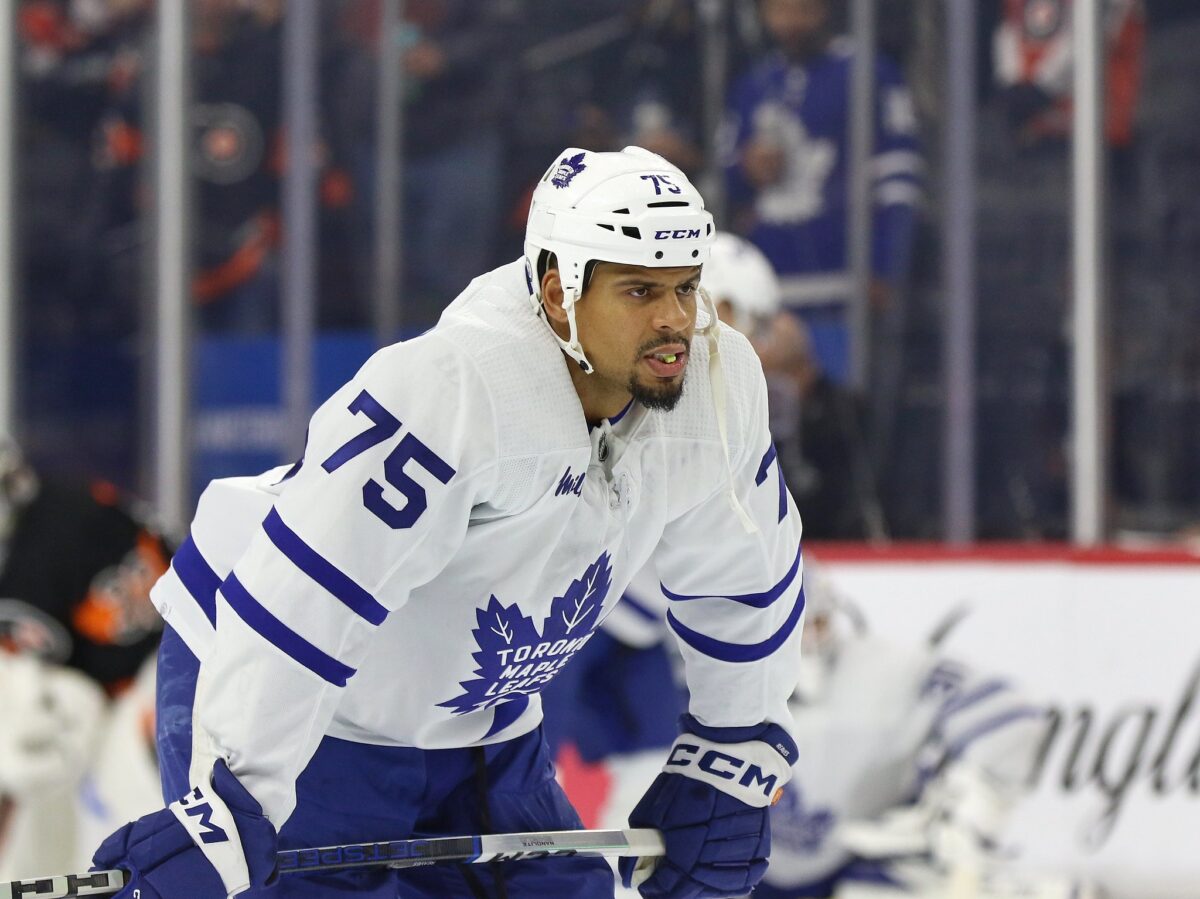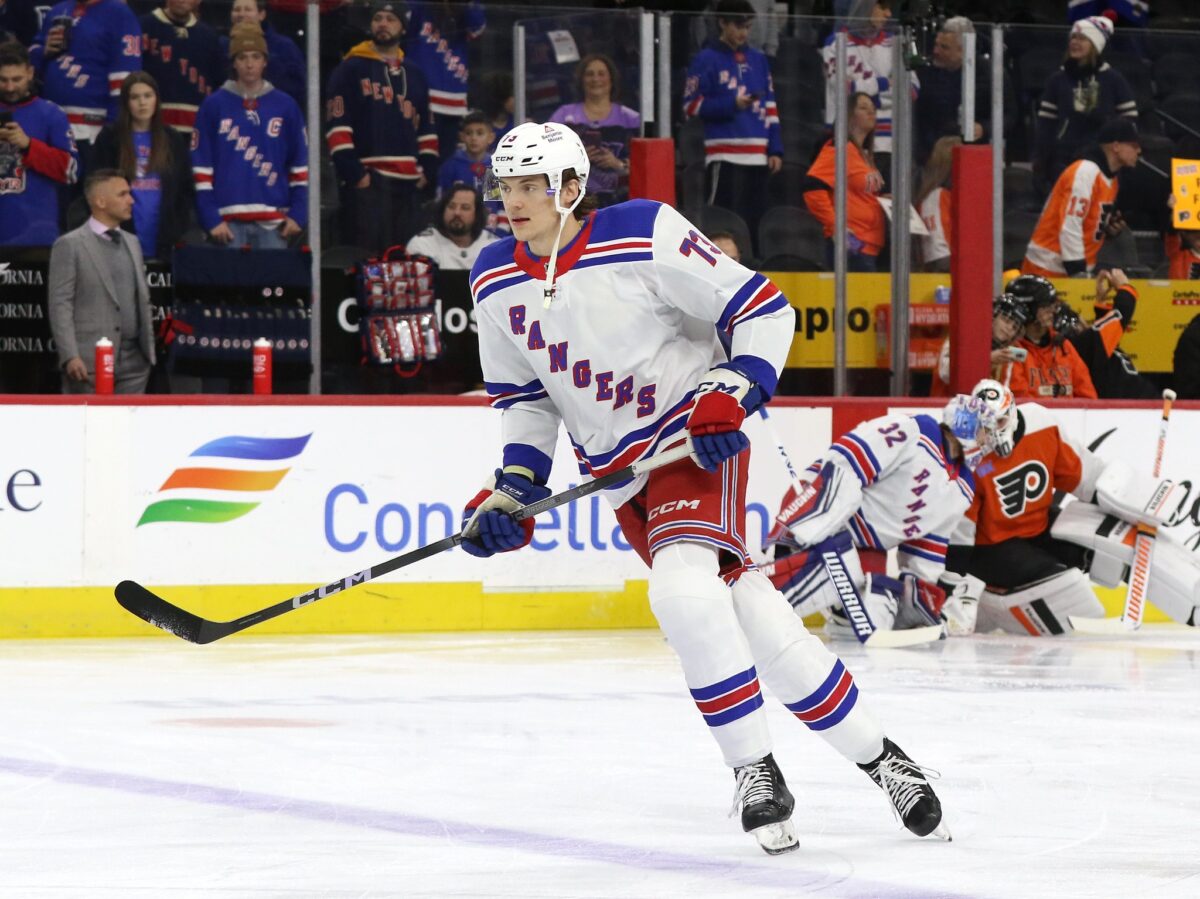In a poignant critique of the NHL’s enduring culture of fighting, Ken Campbell of The Hockey News raises a pressing question: Are we truly comfortable with the brutal path some players take to secure their place in the league? Campbell juxtaposes the tragic fate of former NHL player Greg Johnson, who suffered from CTE and took his own life, with the troubling decision of New York Rangers rookie Matt Rempe to take fighting lessons from Georges Laraque.
Campbell hints that, while fans may enjoy the spectacle of fights, the physical and mental toll on players is too significant to ignore, highlighting the need for the NHL to reevaluate and ultimately move away from this dangerous aspect of the sport.
Related: I Love Fighting in Hockey, but the NHL Needs to Ban It
While fighting in the NHL has long been a staple that many fans enjoy, given what happened this week, it is time to critically assess the impact it has on players and the sport as a whole. The tragic case of former NHL player Greg Johnson and the recent steps taken by Rempe to become an enforcer highlights the dire consequences and misguided nature of this aspect of hockey.
What Is CTE? How Does It Come About?
For any readers who don’t know exactly what the term CTE stands for (and I admit needing to learn more), it is Chronic Traumatic Encephalopathy. CTE is a degenerative brain condition caused by repeated head traumas, such as concussions or blows to the head. It’s been repeatedly a condition for those in professional hockey who have been so-called “enforcers.”

Here’s a short definition and explanation: CTE is a neurodegenerative disease associated with repeated head injuries, particularly in contact sports like football, boxing, and hockey. It develops when repetitive blows to the head result in the accumulation of a protein called tau in the brain. This protein forms clumps that can spread throughout the brain, affecting nerve cells and potentially leading to symptoms such as memory loss, confusion, impaired judgment, aggression, depression, and eventually progressive dementia.
Related: NHL Should Start the Process of Outlawing Fighting
It’s been a huge issue for enforcers in fighting. However, in the case of Johnson, one does not have to be an enforcer to have suffered repeated brain trauma.
Greg Johnson: A Tragic Example
Johnson was a skilled, fast-skating NHL player who never fit the mold of an enforcer. Despite not being a physical player, he sustained numerous concussions during his career, ultimately leading to his untimely death at the age of 48. Two days ago, shocking revelations surfaced regarding Johnson, a former captain of the Nashville Predators. Johnson, who tragically took his own life five years ago, was posthumously diagnosed with CTE. This diagnosis comes after a detailed analysis of his brain tissue conducted by the Concussion Legacy Foundation, as announced Wednesday by Johnson’s widow, Kristin, and their daughters, Carson and Piper.
His family revealed that Johnson’s brain was riddled with CTE. His tragic story underscores the severe long-term effects that concussions and head injuries can have on players, even those not known for physical play. For those who didn’t know Johnson as an NHL player, he was a native of Thunder Bay, Ontario, who carved out a notable 14-season career in the NHL. He served as the second-ever captain for the Predators from 1998 to 2006 and also played with the Detroit Red Wings, Chicago Blackhawks, and Pittsburgh Penguins throughout his career.
His widow Kristin expressed profound shock upon learning of the CTE diagnosis, noting that her late husband had exhibited few outward symptoms of the disease. However, she disclosed that Greg had frequently spoken about his concussions, hinting at underlying concerns about his brain health. CTE’s discovery in Johnson’s case underscores ongoing concerns about the long-term health impacts faced by athletes in contact sports. For those who enjoy hockey, Johnson’s story prompts calls for increased safety measures and heightened awareness within professional leagues.
As discussions around CTE continue to evolve, Johnson’s story serves as a needed reminder of the complexities and challenges faced by athletes long after their playing careers conclude. This finding once again highlights the need for proactive measures to safeguard the health and well-being of athletes at all levels of competition. This is true for all players, not only those who regularly fight.
Related: “The Last Gladiators” Delivers Harsh Truth About Fighting In NHL
Over his NHL career, Johnson collected 369 points in 785 regular-season games. He was a good player. He was known for his leadership and dedication on and off the ice. His career serves as a testament to his skill, determination, and enduring legacy in the NHL. It also serves as a warning for others, which includes young Rempe of the Rangers.
Matt Rempe: A Path of Potential Destruction
In stark contrast to Johnson’s less physical, but still debilitating legacy, Rempe is actively pursuing the role of an enforcer. As Campbell noted in the video above, Rempe is actively taking fighting lessons from former NHL heavyweight Laraque. While one can understand Rempe’s logic, it doesn’t make what he’s doing in any way an intelligent move.
Some might argue that his willingness to fight is his own choice and that he’s mature enough to make that decision. But, when one is 22 years old, stands 6-foot-7, and weighs 241 pounds, it’s easy to feel invincible. Perhaps he believes it’s his only chance to have a career at the highest level of the sport he loves. That said, given he has collected 71 penalty minutes in his first 17 NHL games shows the level to which he’s embracing the opportunity.

Still, as Campbell noted in his video, Rempe’s willingness to become a pugilist to secure a spot in the NHL is troubling. Despite his lack of experience and previous losses in fights, he’s choosing to embrace this dangerous role. While learning from Laraque might improve his fighting skills and ability to protect himself, the inherent risks of concussions and serious injuries remain alarmingly high.
Additionally, what does it say about a sport that allows fighting to happen regularly as part of the show? The answer to this rhetorical question is not much! Why is the NHLPA (National Hockey League’s Players Association) not stepping up? Someone has to know better. The NHLPA acknowledges the contentious nature of fighting in hockey and is seeking to balance the tradition of the sport with player safety.
Related: Oilers Fan Favourite Zack Kassian Retires: A Legacy of Passion
But how much more studying and assessing is needed to understand that there’s no way to reduce injuries and allow fighting at the same time? It’s past time to step up to promote safer playing conditions for all players. The importance of player welfare in all aspects of the game trumps the so-called rush fans might get from fighting.
The Bigger Picture: Fighting’s Limited Contribution to Hockey
Fighting in hockey might entertain fans, but it contributes little to the game itself. The physical and mental toll on players is immense, and the potential for long-term health issues is significant. The NHL has seen numerous players suffer from the consequences of repeated head trauma, leading to issues like CTE, depression, and (in more cases than acceptable) death.
The culture of accepting and even celebrating fighting in hockey needs to be reevaluated. Forget the spectacle, the cost to players is too great. The NHL, teams, and fans must prioritize player safety and well-being over the entertainment value of fights. Developing rules and enforcement mechanisms to eventually eliminate fighting can help protect players from unnecessary harm.
The Bottom Line for Fighting in the NHL
These stories of Johnson and Rempe serve as stark reminders of the real dangers associated with fighting in the NHL. The long-term consequences for players are too severe to ignore. Although Campbell didn’t go as far as to say he wishes fighting were banned from the NHL, I’ll go on record as taking that step.
No sane person would wish this beautiful game of hockey to be sullied by the kind of gladiator-like engagement that fighting calls for. It’s prurient. It’s time for the NHL to take a stand against fighting, focusing on creating a safer environment for its players and ensuring the sport’s integrity and future.
By making these changes, we can honor the memory of those like Johnson and protect the next generation of players like Rempe from a similar fate.
